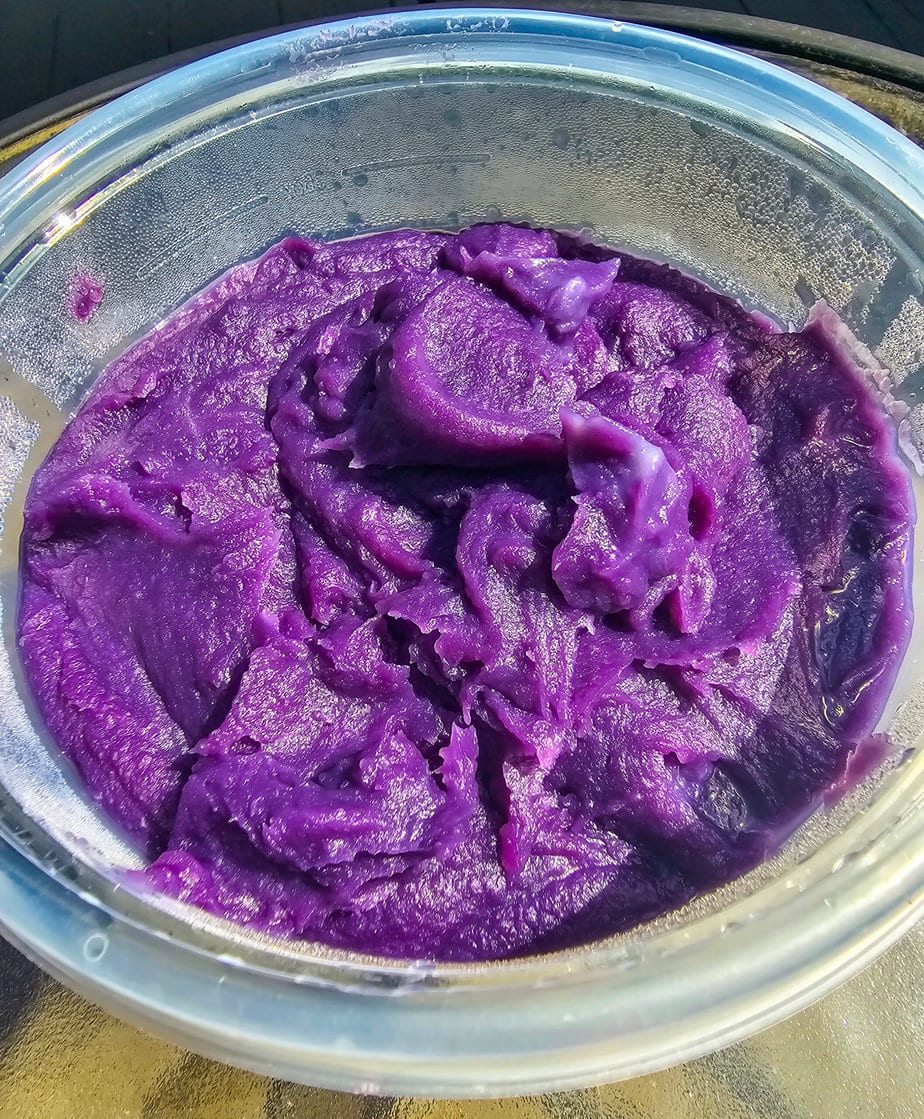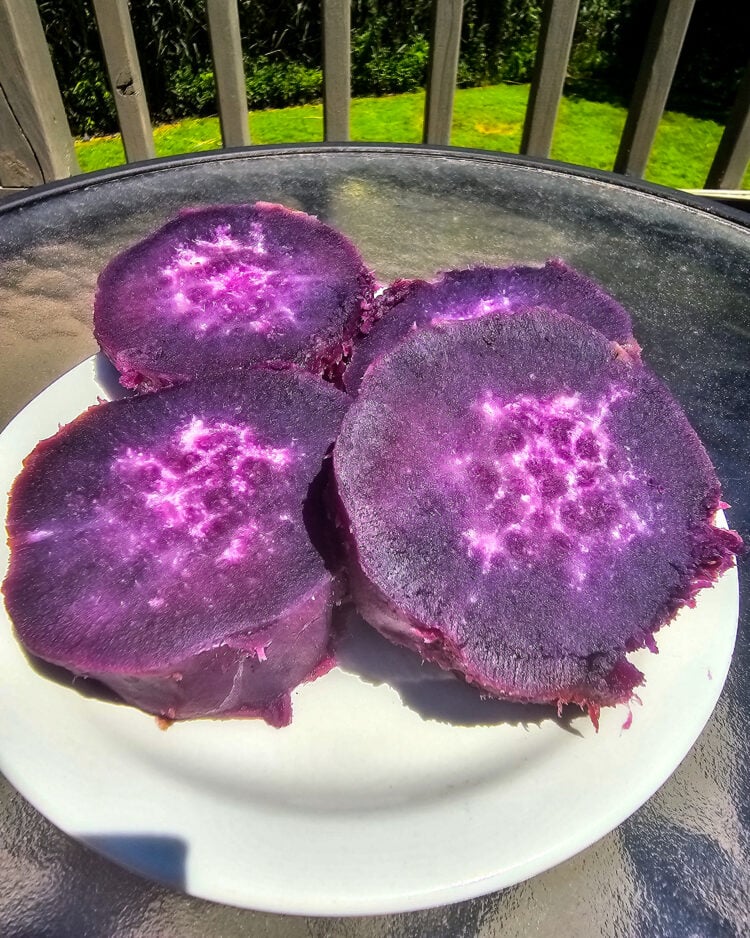Purple desserts, especially sweets like ice cream or pastries such as macarons and other cakes, have become extremely popular on Instagram, thanks to the use of a special ingredient: ube.
It’s a tuber from the yam family, traditionally grown in Southeast Asia, India, and even in the French West Indies, where it’s known by different names (purple yam, winged yam, violet yam).
Its unique purple color and sweet taste have made it popular, particularly since the Pantone color of the year 2018 was purple.
Resembling a colorful sweet potato, ube is trendier than avocado and sweeter than sweet potato. Its presence has set social media ablaze, where it occupies a central place in many food photos. Cooking enthusiasts have quickly adopted this purple tuber, making ube a true star both on the Internet and on plates around the world.
What is Ube?

Ube, with its ancient and diverse origins, is a tuber that goes far beyond its famous purple color. Traditionally grown from India to Southeast Asia and named as such in the Philippines, it can be found in different varieties worldwide, including in Africa and America.
Although the purple color is the most famous, the different varieties of this plant, known scientifically as Dioscorea alata, present shades that can vary significantly. In the French West Indies, a local variety is even known as Saint Martin yam.
Ube, with its rich palette of flavors and colors, has thus gained popularity and found a special place in contemporary cuisine, symbolizing much more than just an exotic tuber.
What Does Ube Taste like?
Ube is often described as having a sweet and subtle taste. It is sometimes compared to vanilla or coconut with a slight nutty touch.
Some also describe it as being sweeter and creamier than sweet potato, to which it is often compared due to its similar texture.
The unique taste and creamy texture of ube make it a popular ingredient in various pastries and desserts, where it adds not only a beautiful purple color but also a distinct and pleasant flavor. It also resembles taro in terms of flavor

How to Cook with Ube?
Here are some ways to use it in various culinary preparations:
- Desserts and Pastries: Ube is often used in cakes, ice creams, and brownies to give them a beautiful purple color and unique flavor.
- Bubble Teas: Recently, ube has found its place in bubble teas, where it is used as a syrup or in the form of a puree (ube halaya) to add a sweet flavor and intriguing color to the drink. The ube latte which is now found everywhere in the world is also a great example.
- Traditional Philippine Cuisine: In the Philippines, where ube originates, it is a central ingredient in many traditional dishes. The famous “Halo-Halo” dessert uses ube in the form of ice cream or jam. Another popular dish is Ube Halaya, a thick purple yam jam, often consumed during festivals.
- Basic Preparation: Ube can be boiled, steamed, or roasted just as you would with sweet potatoes or potatoes. It can be mashed and mixed with sugar, milk, and butter to create a sweet puree, or cut into pieces and added to stews.
- Use in Powder Form: Dehydrated ube powder is also available in some stores and can be rehydrated and used in various recipes, making it easier to incorporate into different dishes.

Ube is a versatile ingredient that adapts to a multitude of cuisines, both traditional and modern. Whether in innovative dessert recipes, trendy drinks like bubble tea, or traditional Filipino dishes, ube brings a unique touch of color and flavor.
Is Ube Good for Health?
Yes, ube is considered good for health and has several nutritional benefits. Here are some details about the nutritional aspects of this tuber:
- Rich in Nutrients: Ube is a rich source of vitamins and minerals, including vitamin C, vitamin A, and various B-complex vitamins. It also contains essential minerals such as potassium and magnesium.
- Powerful Antioxidants: The distinctive color of ube is due to the presence of anthocyanins, compounds that act as powerful antioxidants. They can help protect cells against damage caused by free radicals.
- Dietary Fiber: Ube is rich in fiber, which can contribute to digestive health and help regulate blood sugar levels.
- Low in Fat and Calories: Despite its creamy and sweet taste, ube is relatively low in calories and fat, which can make it a good option for those looking to maintain a healthy weight.
- Eye Health: The high vitamin A content of ube contributes to eye health and can help prevent certain eye conditions.
- Gluten-Free: For those following a gluten-free diet, ube can be an excellent choice, as it is naturally gluten-free.
However, as with all foods, the way ube is prepared and consumed can affect its health benefits. For example, adding large amounts of sugar or fat can reduce the potential benefits.

